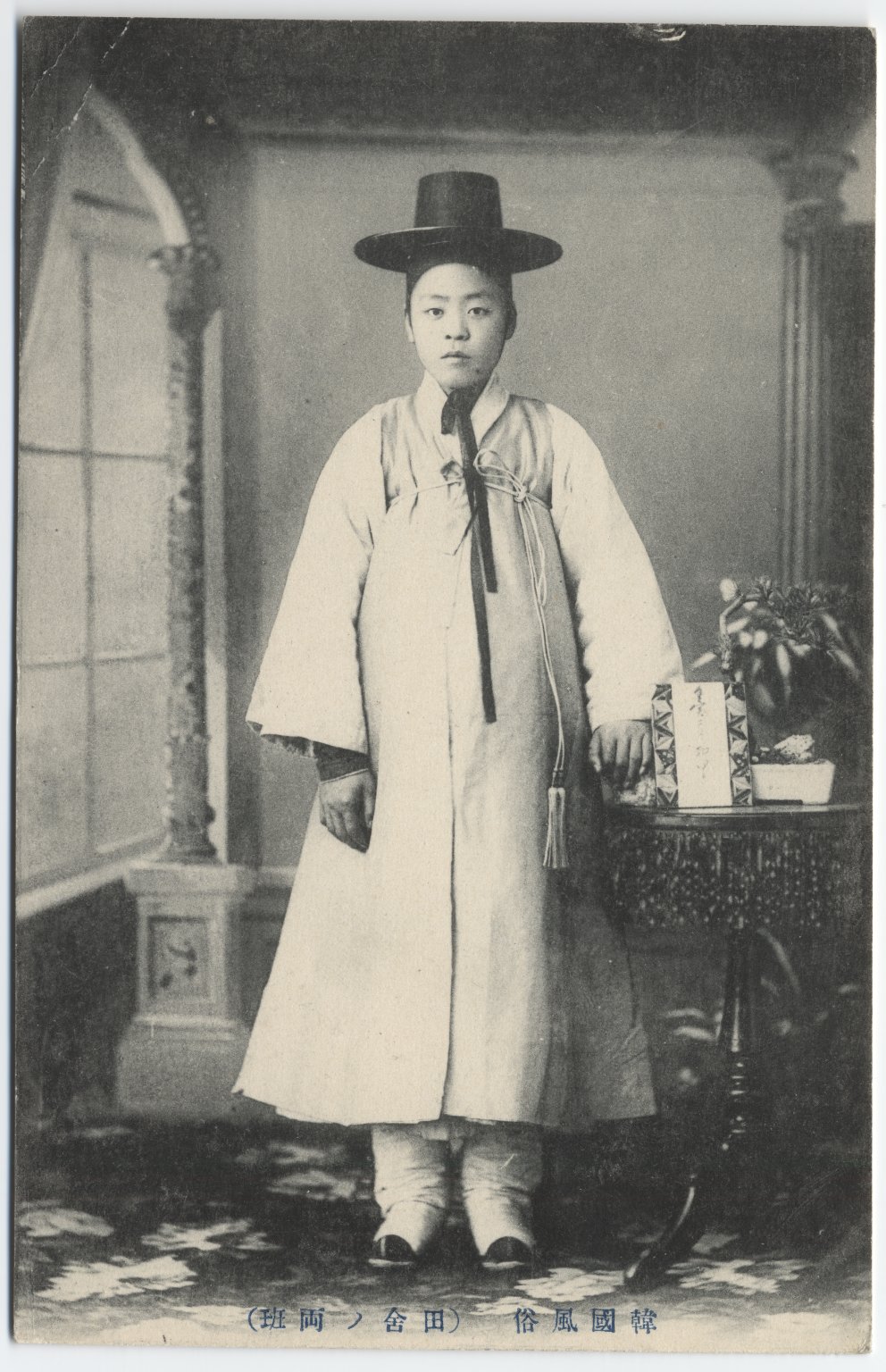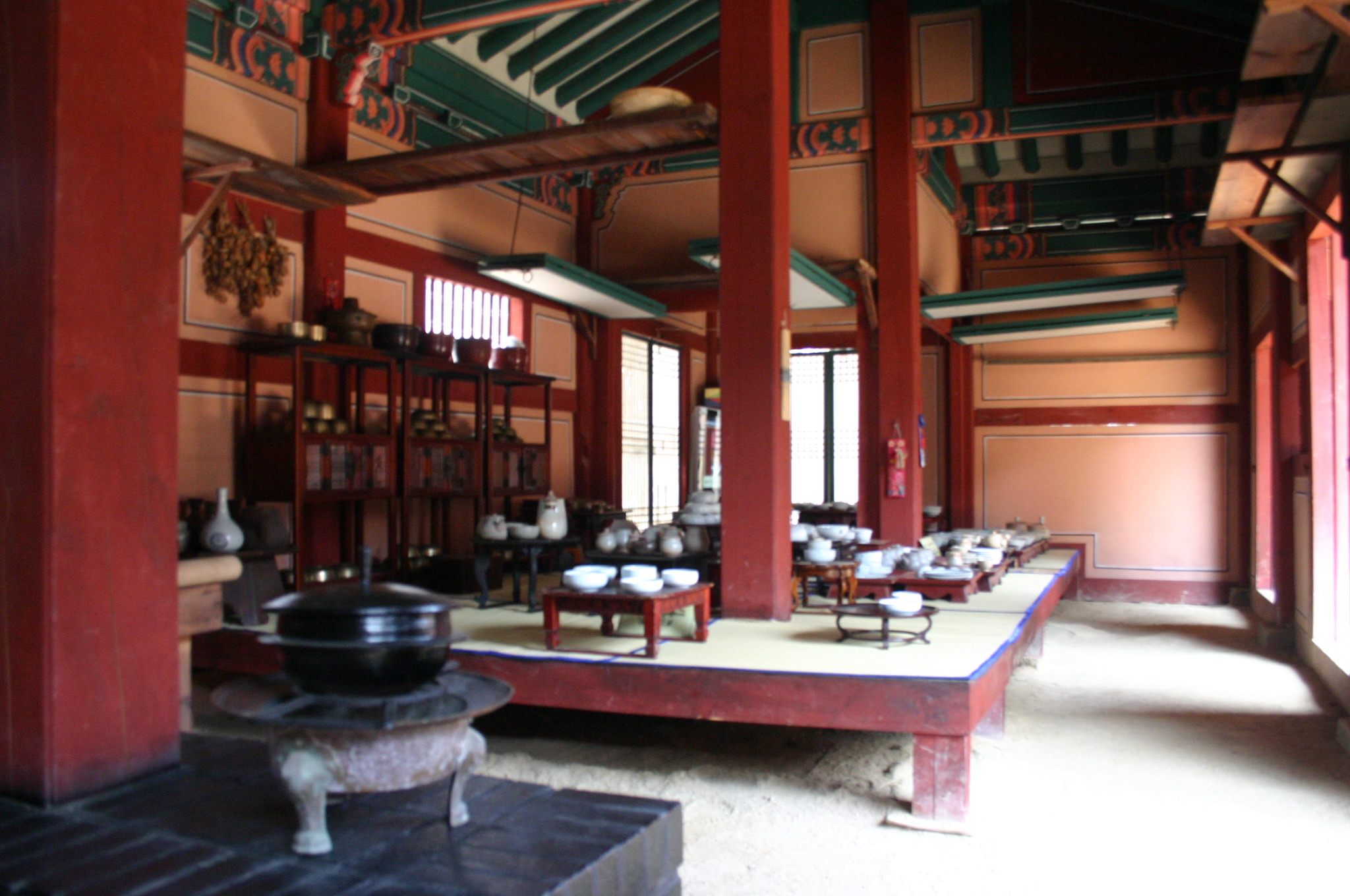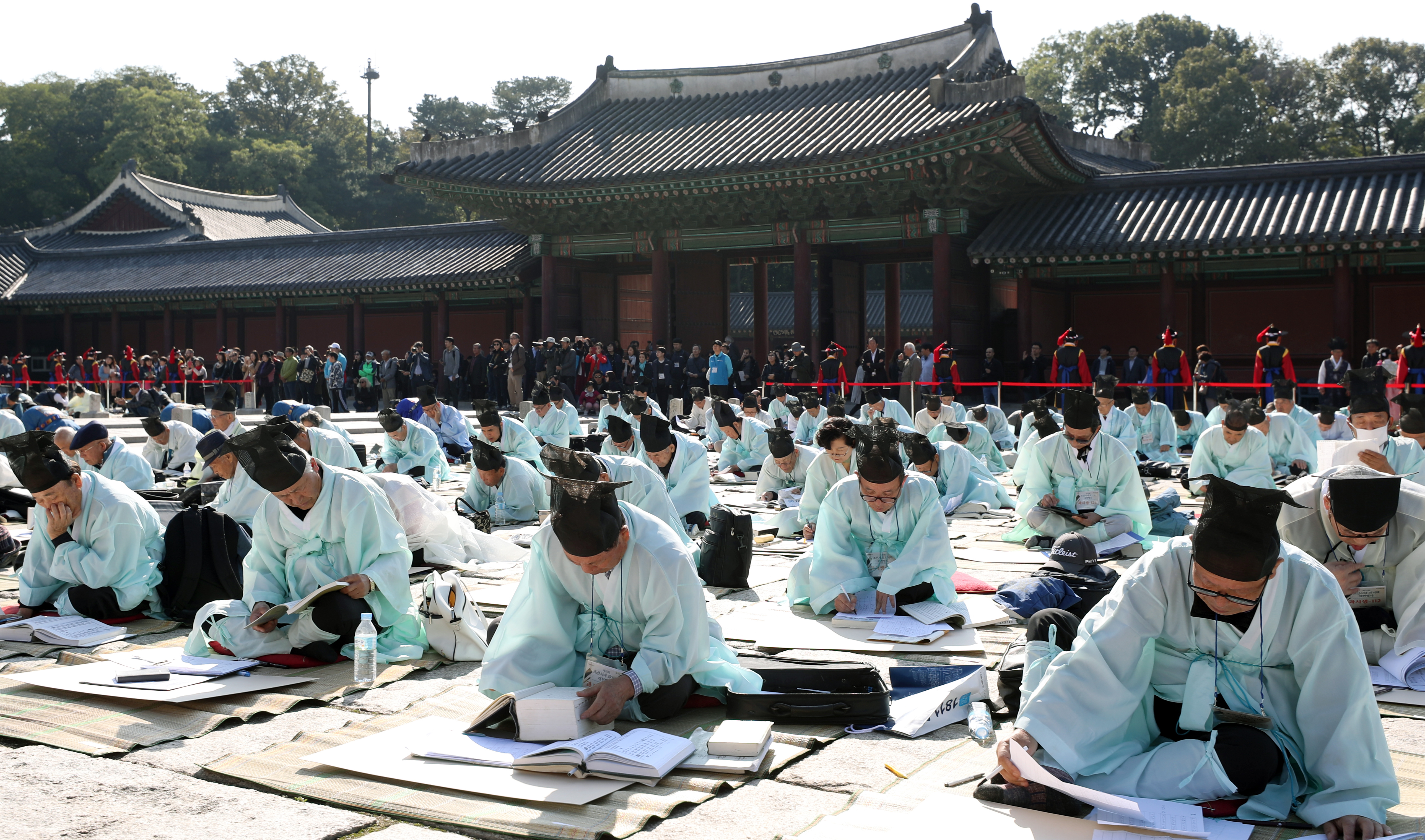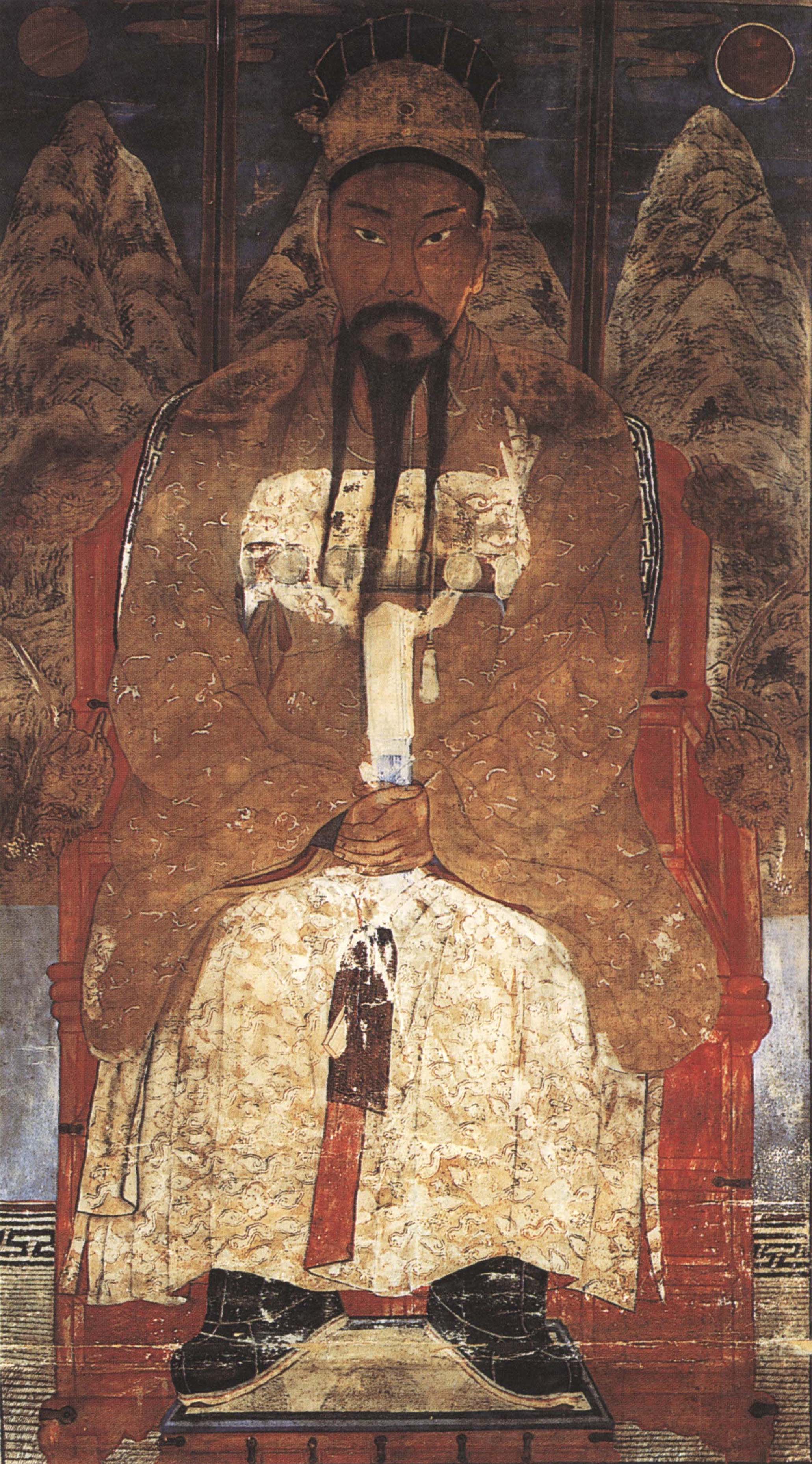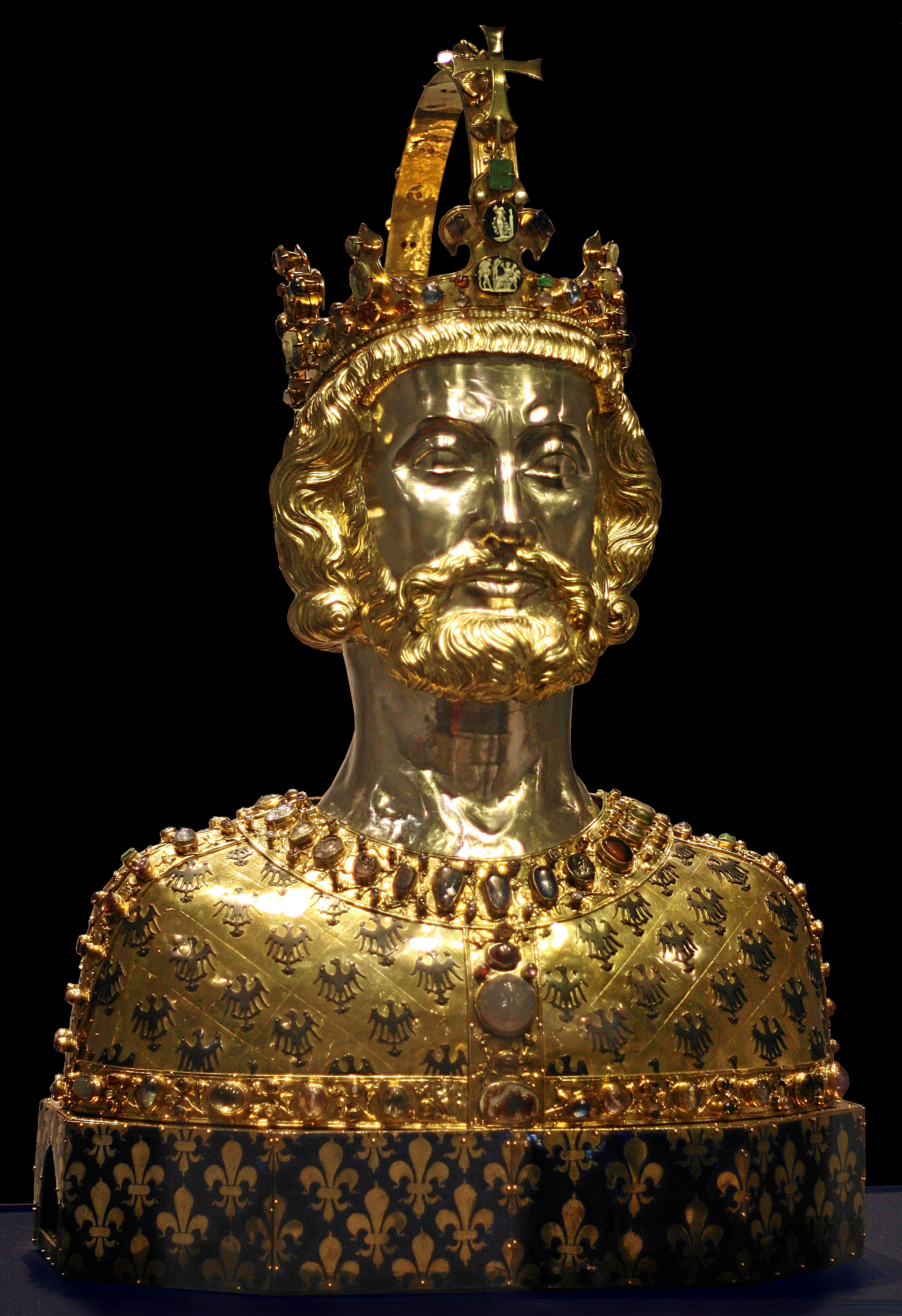|
Jungin
The ''jungin'' or ''chungin'' () were the upper middle class of the Joseon Dynasty in medieval and early modern Korean society. The name "jungin" directly means "middle people". This privileged class of commoners consisted of a small group of petty bureaucrats and other highly educated skilled workers whose technical and administrative skills enabled the '' yangban'' and the royal family to rule the lower classes. ''Jungin'' were the lifeblood of the Korean Confucian agrarian bureaucracy, for whom the upper classes depended on to maintain their vice-like hold on the people. Their traditions and habits are the forerunners of the modern Korean administrative systems in both North and South Korea. Professions and roles in the society In dynastic Korea, particularly during the Joseon period, the ''jungin'' were lower than the '' yangban'' aristocracy but above the lower middle and working class commoners in social status. They included highly educated government-employed specia ... [...More Info...] [...Related Items...] OR: [Wikipedia] [Google] [Baidu] |
Joseon
Joseon (; ; Middle Korean: 됴ᇢ〯션〮 Dyǒw syéon or 됴ᇢ〯션〯 Dyǒw syěon), officially the Great Joseon (; ), was the last dynastic kingdom of Korea, lasting just over 500 years. It was founded by Yi Seong-gye in July 1392 and replaced by the Korean Empire in October 1897. The kingdom was founded following the aftermath of the overthrow of Goryeo in what is today the city of Kaesong. Early on, Korea was retitled and the capital was relocated to modern-day Seoul. The kingdom's northernmost borders were expanded to the natural boundaries at the rivers of Amrok and Tuman through the subjugation of the Jurchens. During its 500-year duration, Joseon encouraged the entrenchment of Confucian ideals and doctrines in Korean society. Neo-Confucianism was installed as the new state's ideology. Buddhism was accordingly discouraged, and occasionally the practitioners faced persecutions. Joseon consolidated its effective rule over the territory of current Korea and saw ... [...More Info...] [...Related Items...] OR: [Wikipedia] [Google] [Baidu] |
Korea
Korea ( ko, 한국, or , ) is a peninsular region in East Asia. Since 1945, it has been divided at or near the 38th parallel, with North Korea (Democratic People's Republic of Korea) comprising its northern half and South Korea (Republic of Korea) comprising its southern half. Korea consists of the Korean Peninsula, Jeju Island, and several minor islands near the peninsula. The peninsula is bordered by China to the northwest and Russia to the northeast. It is separated from Japan to the east by the Korea Strait and the Sea of Japan (East Sea). During the first half of the 1st millennium, Korea was divided between three states, Goguryeo, Baekje, and Silla, together known as the Three Kingdoms of Korea. In the second half of the 1st millennium, Silla defeated and conquered Baekje and Goguryeo, leading to the " Unified Silla" period. Meanwhile, Balhae formed in the north, superseding former Goguryeo. Unified Silla eventually collapsed into three separate states due ... [...More Info...] [...Related Items...] OR: [Wikipedia] [Google] [Baidu] |
Choe Nam-seon
Choe Nam-seon (April 26, 1890 – October 10, 1957), also known by the Japanese pronunciation of his name Sai Nanzen, was a prominent modern Korean historian, pioneering poet, and publisher, and a leading member of the Korean independence movement. He was born into a ''jungin'' (class between aristocrats and commoners) family in Seoul, Korea, under the late Joseon Dynasty, and educated in Seoul. In 1904 he went to study in Japan, and was greatly impressed by the Meiji Restoration reforms.Allen, Chizuko "Northeast Asia Centered Around Korea: Ch'oe Namsŏn's View of History" pages 787-807 from ''The Journal of Asian Studies'', Volume 48, Issue 4, November 1990 page 787. Upon his return to Korea, Choe became active in the Patriotic Enlightenment Movement, which sought to modernize Korea. Choe published Korea's first successful modern magazine, ''Youth'' (소년, ''Sonyeon''), through which he sought to bring modern knowledge about the world to Korea's youth. He coined the term ''ha ... [...More Info...] [...Related Items...] OR: [Wikipedia] [Google] [Baidu] |
Gungnyeo
Gungnyeo (literally "palace women")Han, Hee-sook, pp. 141–146 is a Korean term referring to women waiting on the king and other royalty in traditional Korean society. It is short for "gungjung yeogwan", which translates as "a lady officer of the royal court". ''Gungnyeo'' includes '' sanggung'' (palace matron) and ''nain'' (assistant court ladies), both of which hold rank as officers. The term is also used more broadly to encompass women in a lower class without a rank such as '' musuri'' (lowest maids in charge of odd chores), ''gaksimi'', ''sonnim'', '' uinyeo'' (female physicians) as well as ''nain'' and ''sanggung''. The term spans those from courtiers to domestic workers. Establishment Although the first record of ''gungnyeo'' appears in ''Goryeosa'', a compilation on the history of Goryeo, a provision was first made in 1392 by King Taejo per Jo Jun (趙浚) and other officers' suggestions after the establishment of the Joseon Dynasty. In 1428 Sejong the Great set up ... [...More Info...] [...Related Items...] OR: [Wikipedia] [Google] [Baidu] |
Gwageo
The ''gwageo'' or ''kwago'' were the national civil service examinations under the Goryeo and Joseon dynasties of Korea. Typically quite demanding, these tests measured candidates' ability of writing composition and knowledge of the Chinese classics. The form of writing varied from literature to proposals on management of the state. Technical subjects were also tested to appoint experts on medicine, interpretation, accounting, law etc. These were the primary route for most people to achieve positions in the bureaucracy. Based on the civil service examinations of imperial China, the ''gwageo'' first arose in Unified Silla, gained importance in Goryeo, and were the centerpiece of most education in the Joseon dynasty. The tutelage provided at the hyanggyo, seowon, and Sungkyunkwan was aimed primarily at preparing students for the gwageo and their subsequent career in government service. Under Joseon law, high office was closed to those who were not children of officials of ... [...More Info...] [...Related Items...] OR: [Wikipedia] [Google] [Baidu] |
List Of Rulers Of Korea
This is a list of monarchs of Korea, arranged by dynasty. Names are romanized according to the South Korean Revised Romanization of Korean. McCune–Reischauer romanizations may be found at the articles about the individual monarchs. Gojoseon Gojoseon (2333 BC – 108 BC) was the first Korean kingdom. According to legend, it was founded by Dangun in 2333 BC. Bronze Age archaeological evidence of Gojoseon culture is found in northern Korea and Liaoning. By the 9th to 4th century BC, various historical and archaeological evidence shows Gojoseon was a flourishing state and a self-declared kingdom. Both Dangun and Gija are believed to be mythological figures, but recent findings suggest and theorize that since Gojoseon was a kingdom with artifacts dating back to the 4th millennium BC, Dangun and Gija may have been royal or imperial titles used for the monarchs of Gojoseon, hence the use of Dangun for 1900 years. * :"An extreme manifestation of nationalism and the family cult was th ... [...More Info...] [...Related Items...] OR: [Wikipedia] [Google] [Baidu] |
Royal Noble Consort Huibin Jang
Royal Noble Consort Hui of the Indong Jang clan (Hangul: 희빈 장씨, Hanja: 禧嬪 張氏; 3 November 1659 – 9 November 1701), personal name Jang Ok-jeong (Hangul: 장옥정, Hanja: 張玉貞), was a consort of King Sukjong of Joseon and the mother of King Gyeongjong. She was the Queen of Joseon from 1689 until her deposition, in 1694. Biography Early life Jang Ok-jeong was the daughter of Jang Hyeong and his second wife, Lady Yun of the Papyeong Yun clan. Part of the Namin faction, she came from a long line of interpreters and belonged to the Jungin class. Ok-jeong is widely thought to have been one of the most beautiful women in Joseon, and her charm was mentioned in the Annals. She became a lady-in-waiting to the King's step-great-grandmother, Grand Queen Dowager Jaui, at the recommendation of Prince Dongpyeong, who was Sukjong's first cousin-once-removed and Jaui's step-grandson. Life as Royal Consort While visiting Queen Jaui, the King became infatuated with ... [...More Info...] [...Related Items...] OR: [Wikipedia] [Google] [Baidu] |
King Sukjong Of Joseon
King is the title given to a male monarch in a variety of contexts. The female equivalent is queen, which title is also given to the consort of a king. *In the context of prehistory, antiquity and contemporary indigenous peoples, the title may refer to tribal kingship. Germanic kingship is cognate with Indo-European traditions of tribal rulership (c.f. Indic ''rājan'', Gothic '' reiks'', and Old Irish ''rí'', etc.). *In the context of classical antiquity, king may translate in Latin as '' rex'' and in Greek as ''archon'' or '' basileus''. *In classical European feudalism, the title of ''king'' as the ruler of a ''kingdom'' is understood to be the highest rank in the feudal order, potentially subject, at least nominally, only to an emperor (harking back to the client kings of the Roman Republic and Roman Empire). *In a modern context, the title may refer to the ruler of one of a number of modern monarchies (either absolute or constitutional). The title of ''king'' is us ... [...More Info...] [...Related Items...] OR: [Wikipedia] [Google] [Baidu] |
Gyeongjong Of Joseon
Gyeongjong of Joseon (20 November 1688 – 11 October 1724; reigned 1720–1724) was the 20th king of the Joseon dynasty of Korea. He was the son of King Sukjong and his concubine, Royal Noble Consort Hui of the Indong Jang clan. Biography In 1690, Gyeongjong's designation as heir to the throne precipitated a struggle between the Noron faction, which supported his half-brother Prince Yeoning, and the Soron faction, which supported Gyeongjong of Joseon. Due to this struggle, Soron scholars were kept out of power and factional strife reached a high point during Gyeongjong's reign. Following the death of King Sukjong in 1720, Crown Prince Hwiso (Yi Yun, 이윤 왕세자) ascended the throne at age 31 as King Gyeongjong. When Sukjong died in 1720, he supposedly told Yi Yi-myoung to name Yeoning-geum as Gyeongjong's heir, but suspicions arose between Soron, Noron enemies, from the absence of a historiographer or recorder. Gyeongjong suffered from ill health during his reign, and ... [...More Info...] [...Related Items...] OR: [Wikipedia] [Google] [Baidu] |
Upper Middle Class
In sociology, the upper middle class is the social group constituted by higher status members of the middle class. This is in contrast to the term '' lower middle class'', which is used for the group at the opposite end of the middle-class stratum, and to the broader term ''middle class''. There is considerable debate as to how the upper middle class might be defined. According to sociologist Max Weber, the upper middle class consists of well-educated professionals with postgraduate degrees and comfortable incomes. The American upper middle class is defined similarly using income, education, and occupation as the predominant indicators. In the United States, the upper middle class is defined as consisting mostly of white-collar professionals who not only have above-average personal incomes and advanced educational degrees but also a higher degree of autonomy in their work. The main occupational tasks of upper-middle-class individuals tend to center on conceptualizing, consu ... [...More Info...] [...Related Items...] OR: [Wikipedia] [Google] [Baidu] |
Europe
Europe is a large peninsula conventionally considered a continent in its own right because of its great physical size and the weight of its history and traditions. Europe is also considered a subcontinent of Eurasia and it is located entirely in the Northern Hemisphere and mostly in the Eastern Hemisphere. Comprising the westernmost peninsulas of Eurasia, it shares the continental landmass of Afro-Eurasia with both Africa and Asia. It is bordered by the Arctic Ocean to the north, the Atlantic Ocean to the west, the Mediterranean Sea to the south and Asia to the east. Europe is commonly considered to be separated from Asia by the watershed of the Ural Mountains, the Ural River, the Caspian Sea, the Greater Caucasus, the Black Sea and the waterways of the Turkish Straits. "Europe" (pp. 68–69); "Asia" (pp. 90–91): "A commonly accepted division between Asia and Europe ... is formed by the Ural Mountains, Ural River, Caspian Sea, Caucasus Mountains, and the Blac ... [...More Info...] [...Related Items...] OR: [Wikipedia] [Google] [Baidu] |
